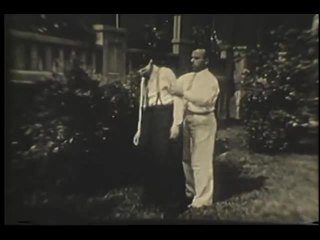
Dementia praecox is a disused psychiatric diagnosis that originally designated a chronic, deteriorating psychotic disorder characterized by rapid cognitive disintegration, usually beginning in the late teens or early adulthood. Over the years, the term dementia praecox was gradually replaced by the term schizophrenia, which initially had a meaning that included what is today considered the autism spectrum.
Psychosis is a condition of the mind or psyche that results in difficulties determining what is real and what is not real. Symptoms may include delusions and hallucinations, among other features. Additional symptoms are disorganized thinking and incoherent speech and behavior that is inappropriate for a given situation. There may also be sleep problems, social withdrawal, lack of motivation, and difficulties carrying out daily activities. Psychosis can have serious adverse outcomes.

Schizophrenia is a mental disorder characterized variously by hallucinations, delusions, disorganized thinking and behavior, and flat or inappropriate affect. Symptoms develop gradually and typically begin during young adulthood and are never resolved. There is no objective diagnostic test; diagnosis is based on observed behavior, a psychiatric history that includes the person's reported experiences, and reports of others familiar with the person. For a diagnosis of schizophrenia, the described symptoms need to have been present for at least six months or one month. Many people with schizophrenia have other mental disorders, especially mood disorders, anxiety disorders, and obsessive–compulsive disorder.
Schizoaffective disorder is a mental disorder characterized by symptoms of both schizophrenia (psychosis) and a mood disorder - either bipolar disorder or depression. The main diagnostic criterion is the presence of psychotic symptoms for at least two weeks without prominent mood symptoms. Common symptoms include hallucinations, delusions, disorganized speech and thinking, as well as mood episodes. Schizoaffective disorder can often be misdiagnosed when the correct diagnosis may be psychotic depression, bipolar I disorder, schizophreniform disorder, or schizophrenia. This is a problem as treatment and prognosis differ greatly for most of these diagnoses. Many people with schizoaffective disorder have other mental disorders including anxiety disorders.
Richard Bentall is a Professor of Clinical Psychology at the University of Sheffield in the UK.

Paul Eugen Bleuler was a Swiss psychiatrist and humanist most notable for his contributions to the understanding of mental illness. He coined several psychiatric terms including "schizophrenia", "schizoid", "autism", depth psychology and what Sigmund Freud called "Bleuler's happily chosen term ambivalence".

Jim van Os is a Dutch academic and psychiatrist. He is Professor of Psychiatry at Utrecht University and medical manager of the Brain Center at UMC Utrecht, the Netherlands.
Thought broadcasting is a type of delusional condition in which the affected person believes that others can hear their inner thoughts, despite a clear lack of evidence. The person may believe that either those nearby can perceive their thoughts or that they are being transmitted via mediums such as television, radio or the internet. Different people can experience thought broadcasting in different ways. Thought broadcasting is most commonly found among people who have a psychotic disorder, specifically schizophrenia.

Marius Anton Joannes Romme is a Dutch psychiatrist. He is best known for his work on hearing voices and regarded as the founder and principal theorist for the Hearing Voices Movement.
Substance-induced psychosis is a form of psychosis that is attributed to substance intoxication, withdrawal or recent consumption of psychoactive drugs. It is a psychosis that results from the effects of various substances, such as medicinal and nonmedicinal substances, legal and illegal drugs, chemicals, and plants. Various psychoactive substances have been implicated in causing or worsening psychosis in users.

Klaus Conrad was a German neurologist and psychiatrist with important contributions to neuropsychology and psychopathology. He joined the Nazi Party (NSDAP) in 1940. He was best known as a professor of psychiatry and neurology, and director of the University Psychiatric Hospital in Göttingen from 1958 until his death.
Childhood schizophrenia is similar in characteristics of schizophrenia that develops at a later age, but has an onset before the age of 13 years, and is more difficult to diagnose. Schizophrenia is characterized by positive symptoms that can include hallucinations, delusions, and disorganized speech; negative symptoms, such as blunted affect and avolition and apathy, and a number of cognitive impairments. Differential diagnosis is problematic since several other neurodevelopmental disorders, including autism spectrum disorder, language disorder, and attention deficit hyperactivity disorder, also have signs and symptoms similar to childhood-onset schizophrenia.

The Protest Psychosis: How Schizophrenia Became a Black Disease is a 2010 book by the psychiatrist Jonathan Metzl, and published by Beacon Press, covering the history of the 1960s Ionia State Hospital, located in Ionia, Michigan, and converted into the Ionia Correctional Facility in 1986. The book describes the facility as one of America's largest and most notorious state psychiatric hospitals in the era before deinstitutionalization.

Alexandre Dorothée Marie Adriaan Charlotte Escher was a Dutch mental health advocate and researcher.

The Kraepelinian dichotomy is the division of the major endogenous psychoses into the disease concepts of dementia praecox, which was reformulated as schizophrenia by Eugen Bleuler by 1908, and manic-depressive psychosis, which has now been reconceived as bipolar disorder. This division was formally introduced in the sixth edition of Emil Kraepelin's psychiatric textbook Psychiatrie. Ein Lehrbuch für Studierende und Aerzte, published in 1899. It has been highly influential on modern psychiatric classification systems, the DSM and ICD, and is reflected in the taxonomic separation of schizophrenia from affective psychosis. However, there is also a diagnosis of schizoaffective disorder to cover cases that seem to show symptoms of both.
A self-disorder, also called ipseity disturbance, is a psychological phenomenon of disruption or diminishing of a person's minimal self – the fundamental sense that one's experiences are truly one's own. People with self-disorder feel that their internal experiences are actually external; for example, they may experience their own thoughts as coming from outside themselves, whether in the form of true auditory hallucinations or merely as a vague sense that their thoughts do not belong to them.

Basic symptoms of schizophrenia are subjective symptoms, described as experienced from a person's perspective, which show evidence of underlying psychopathology. Basic symptoms have generally been applied to the assessment of people who may be at risk to develop psychosis. Though basic symptoms are often disturbing for the person, problems generally do not become evident to others until the person is no longer able to cope with their basic symptoms. Basic symptoms are more specific to identifying people who exhibit signs of prodromal psychosis (prodrome) and are more likely to develop schizophrenia over other disorders related to psychosis. Schizophrenia is a psychotic disorder, but is not synonymous with psychosis. In the prodrome to psychosis, uncharacteristic basic symptoms develop first, followed by more characteristic basic symptoms and brief and self-limited psychotic-like symptoms, and finally the onset of psychosis. People who were assessed to be high risk according to the basic symptoms criteria have a 48.5% likelihood of progressing to psychosis. In 2015, the European Psychiatric Association issued guidance recommending the use of a subscale of basic symptoms, called the Cognitive Disturbances scale (COGDIS), in the assessment of psychosis risk in help-seeking psychiatric patients; in a meta-analysis, COGDIS was shown to be as predictive of transition to psychosis as the Ultra High Risk (UHR) criteria up to 2 years after assessment, and significantly more predictive thereafter. The basic symptoms measured by COGDIS, as well as those measured by another subscale, the Cognitive-Perceptive basic symptoms scale (COPER), are predictive of transition to schizophrenia.
Cenesthopathy, also known as coenesthesiopathy, is a rare psychiatric term used to refer to the feeling of being ill and this feeling is not localized to one region of the body. Most notably, cenesthopathies are characterized by aberrant and strange bodily sensations.
Dorothea Buck was a German writer and sculptor, diagnosed with schizophrenia at the age of 19. She was a victim of the Nazi dictatorship which forced her to be sterilized; she subsequently became an advocate for psychiatric reform.

Paul H. Lysaker was an American clinical psychologist and Professor of Clinical Psychology in the Department of Psychiatry, Indiana University School of Medicine. He is known for his work on developing and disseminating metacognitively oriented psychotherapy for individuals with psychosis.











